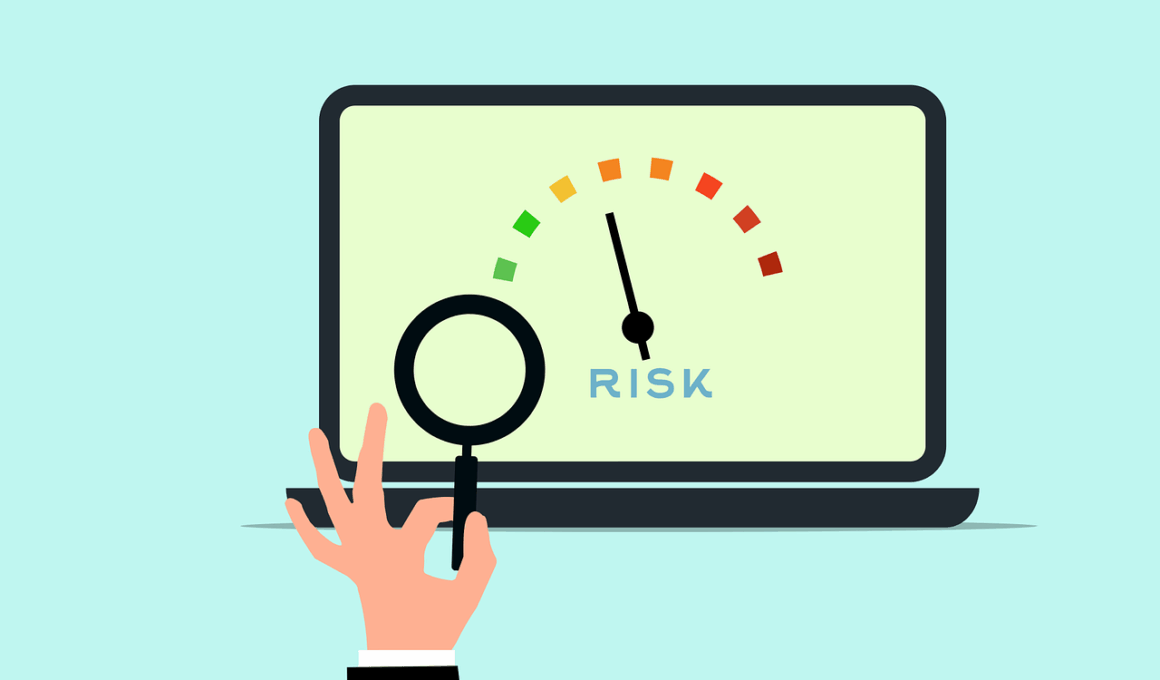Innovations in Injury Risk Assessment Technologies
In recent years, innovations in injury risk assessment technologies have transformed the landscape of injury prevention. These advancements play a critical role in not just identifying risks but also in ranking them based on potential severity and likelihood. Emerging technologies such as wearable devices and smart fabrics are providing unprecedented insights into athletes’ physical conditions and biomechanical data. These tools enable more accurate assessments of injury risk factors, which can be tailored to each individual’s unique physiology. Furthermore, machine learning algorithms analyze a vast amount of data to predict injury patterns more effectively. By quantifying risk, athletic trainers and medical professionals can develop personalized training regimens to minimize injuries. This proactive approach marks a significant shift from traditional methods, which often rely on retrospective analysis. Information sourced from smart devices is being used to monitor athlete performance in real-time, ensuring timely interventions. As technologies evolve, it’s essential to bridge the gap between data collection and practical application. Health professionals must ensure accessibility and understanding of technology for athletes at all levels, from youth sports to professional leagues. Consequently, injury prevention becomes more targeted and effective.
The Role of Wearable Technology
Wearable technology has emerged as a pivotal element in injury risk assessment, revolutionizing how athletes train and recover. Devices such as smartwatches and fitness trackers continuously monitor various health metrics, including heart rate, activity levels, and movement patterns. By analyzing this data, health professionals can identify potential indicators of fatigue or susceptibility to injuries. Additionally, some wearables utilize GPS tracking combined with biomechanics to provide insights about workload and technique. With such detailed feedback, trainers can adjust training loads accordingly to prevent overtraining and reduce injury occurrences. Wearables also support real-time communication between athletes and healthcare professionals, which enhances decision-making processes concerning training plans. Innovative companies are now integrating these wearables with mobile applications that allow athletes to view their performance data, fostering an engaging training environment. This interactivity empowers athletes to take charge of their own health and fitness, promoting a proactive rather than reactive mindset toward injuries. As the technology advances, further integrations with artificial intelligence and predictive analytics are anticipated, which will only enhance the accuracy and effectiveness of injury risk assessments, closing the loop between data insight, intervention, and prevention.
Another promising innovation in injury risk assessment is the use of advanced imaging techniques coupled with machine learning. Technologies such as magnetic resonance imaging (MRI) and computed tomography (CT) scans provide detailed insights into soft tissue and bone conditions. When integrated with machine learning algorithms, these imaging modalities can identify subtle changes in anatomical structures that might predispose individuals to injuries. For instance, algorithms can classify the likelihood of tear occurrences in muscles and ligaments based on previous imaging data. Advanced imaging sweetens the understanding of injuries by revealing chronic conditions that may not have immediate symptoms but pose long-term risks. Moreover, this integration facilitates a shift towards preventive care, helping healthcare providers create specialized treatment plans tailored to individual needs. The data generated from imaging can guide crucial interventions prior to a forced break in training, giving athletes a substantial edge. As reporting and processing of imaging evolve, athletes will increasingly benefit from personalized recommendations based on their biomechanical profiles. Nevertheless, the key lies in actionable insights derived from this data, directing the focus toward sustained athlete health and injury avoidance.
Artificial Intelligence in Predictive Analytics
Artificial intelligence (AI) is a game-changer in predictive analytics for injury risk assessment. By analyzing vast datasets, AI models can uncover patterns not easily visible to human analysts. Such patterns may indicate an athlete’s likelihood of sustaining an injury based on variables like historical data, biomechanical factors, and real-time performance metrics. Sports organizations are beginning to harness AI technology to optimize training protocols and game strategies to decrease injury rates effectively. By implementing tailored training schedules grounded in predictive insights, athletes can reduce their exposure to high-risk situations. These AI systems can also adapt in real time, recalibrating athlete evaluations based on performance fluctuations, thereby maintaining continuously updated risk assessments. This dynamic approach provides a safety net, trying to prevent injuries before they occur. Additionally, coaches can make informed decisions concerning player rotations and rest periods, thus promoting athlete longevity. However, as reliance on AI grows, so does the imperative to ensure data accuracy and ethical considerations in its application. The marriage of technology, data, and human insight marks an essential evolution in injury risk management strategies.
The integration of biomechanics in injury risk assessment technologies offers profound insights into movement patterns and potential risks. Modern biomechanics utilizes high-speed cameras and motion analysis software to dissect athletes’ movements intricately. These tools allow professionals to identify inefficient techniques or misalignments that could lead to injuries. By assessing an athlete’s posture, gait, and joint angles during various activities, trainers can pinpoint specific deficiencies that place them at risk. Once these elements are identified, customized interventions focusing on correcting these flaws can dramatically enhance performance and safety. Furthermore, biomechanical assessments extend beyond athletes engaged in sports; they can benefit individuals with physically demanding jobs or those recovering from injuries. Such comprehensive assessments help facilitate tailored rehabilitation programs that not only address current issues but also work toward long-term prevention strategies. The combination of biomechanics with emerging technologies leads to continuous improvements in injury management. As science and technology expand, integrating biomechanics into mainstream practice remains instrumental in reducing injury prevalence and promoting athlete health across all levels. This marks a significant milestone in refining injury risk assessment into a precise, analytic process.
Data Sharing and Collaboration
Effective injury risk assessment hinges on collaboration and data sharing across multiple disciplines. The interconnection of sports science, coaching, physiotherapy, and nutritional science offers a holistic view of an athlete’s health. This collaborative approach ensures that every professional involved can contribute their expertise, leading to more comprehensive assessments. Comprehensive data sharing among these specialists removes knowledge silos and fosters integrated planning regarding injury prevention strategies. Technologies that facilitate real-time data sharing, including cloud-enabled platforms, are profoundly impacting how information is exchanged. Automated reporting tools allow coaching and healthcare teams to analyze training loads, individual health updates, and performance results, ensuring everyone’s synchronized efforts. This collaborative environment promotes collective ownership of athlete performance and wellness, leading to improved outcomes. Coaches can make informed decisions based on overall health insights instead of isolated factors, resulting in smarter training loads and recovery strategies. Furthermore, ongoing dialogue between athletes and teams encourages athlete empowerment, allowing them to voice concerns about potential risks. This level of engagement can significantly enhance preventative measures and help create a culture of safety, ultimately minimizing injuries across sports disciplines.
The future of injury risk assessment technologies looks promising, with innovations continually reshaping how we understand and mitigate injuries. Emerging advancements such as virtual reality (VR) and augmented reality (AR) are poised to revolutionize training regimens by providing immersive experiences for athletes. This technology enables athletes to rehearse complex movements and strategies in a risk-free environment, leading to improved skill acquisition and better injury prevention. Additionally, the fusion of biomechanics and VR is expected to enhance technique analysis by tracking movements in these environments, thus delivering more personalized feedback. Furthermore, as technology evolves, the integration of genome sequencing into risk assessments may provide insights into individual susceptibility to injuries based on genetic profiles. Understanding one’s genetic predispositions can guide personalized training and recovery strategies, allowing more effective injury prevention. Moreover, continuous advancements in machine learning and AI will likely lead to even more refined predictive models. Stakeholders must remain proactive in adopting these technologies while addressing ethical and privacy considerations surrounding athlete data. By embracing a culture of innovation, sports organizations can significantly enhance both performance and athlete safety, paving the way for a healthier future in athletics.
In conclusion, innovations in injury risk assessment technologies serve a pivotal role in enhancing athlete safety and optimizing performance. From wearable devices and advanced imaging techniques to AI-driven analytics and biomechanical assessments, technology continues to shape the future of injury prevention. By harnessing these advancements, professionals can better identify risk factors and implement tailored interventions to protect athletes at all levels. As technology evolves and merges with sports science, the relationship between data and practical application will become more pronounced. Data sharing and interdisciplinary collaboration will be essential in fostering an environment focused on injury prevention and athlete wellness. The inspiration for future innovations hinges on continually prioritizing athlete safety, emphasizing proactive approaches to injury management rather than reactive measures. With technology progressing rapidly, incorporating new tools while adhering to ethical guidelines will ensure the effectiveness and accuracy of injury assessments. Embracing a mindset of continuous development and improvement will lead to better outcomes for athletes and teams alike. Ultimately, the commitment to securing the health of athletes is paramount, and ongoing advancements will pave the path to safer sports experiences.


